ICL7107CPLZ A/D Converter: Features, Pinout, and Datasheet
Intersil (Renesas Electronics America)
IC ADC 3.5DIGIT LCD/LED 40DIP
Unit Price: $9.036441
Ext Price: $9.04









IC ADC 3.5DIGIT LCD/LED 40DIP
The ICL7107CPLZ is a 3.5-digit A/D converter in a 40-pin DIP package with great performance and low power consumption. This article mainly introduces features, pinout, datasheet and other detailed information about Intersil (Renesas Electronics America) ICL7107CPLZ.

How to Make A Mini Digital Voltmeter
ICL7107CPLZ Description
The ICL7107CPLZ is a 3.5-digit A/D converter in a 40-pin DIP package with great performance and low power consumption. It has a seven-segment decoder, display drivers, a clock, and a reference. An instrument-sized light-emitting diode (LED) display is directly driven by the ICL7107. It has an auto-zero range of less than 10V, a zero-drift range of less than 1V/°C, a 10pA input bias current, and a rollover error range of less than one count. True differential inputs and references are beneficial in all systems, but they provide a distinct advantage to the designer when measuring load cells, strain gauges, and other bridge-type transducers.
ICL7107CPLZ Pinout
The following figure is ICL7107CPLZ Pinout.

Pinout
ICL7107CPLZ CAD Model
The followings are ICL7107CPLZ Symbol, Footprint and 3D Model.
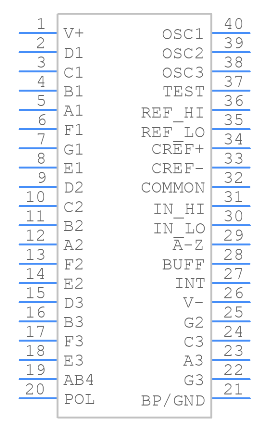
Symbol
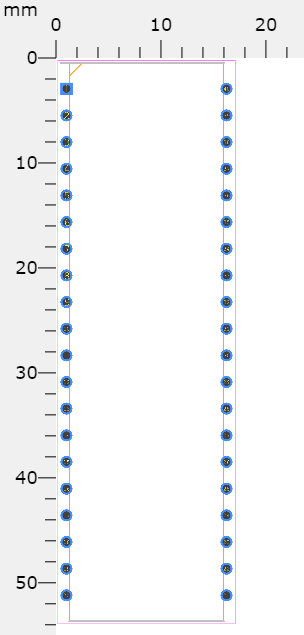
Footprint
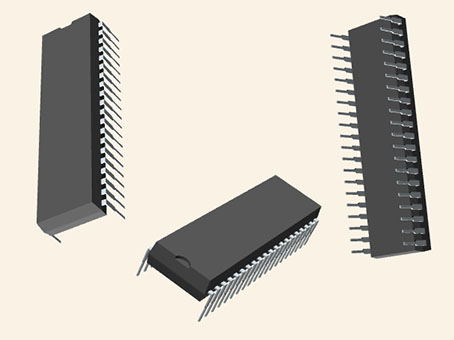
3D Model
ICL7107CPLZ Features
• Guaranteed Zero Reading for 0V Input on All Scales
• True Polarity at Zero for Precise Null Detection
• 1pA Typical Input Current
• True Differential Input and Reference, Direct Display Drive
- LCD ICL7106, LED lCL7107
• Low Noise - Less Than 15µVP-P
• On-Chip Clock and Reference
• Low Power Dissipation - Typically Less Than 10mW
• No Additional Active Circuits Required
• Enhanced Display Stability
• Pb-Free Plus Anneal Available (RoHS Compliant)
Specifications
- TypeParameter
- Factory Lead Time9 Weeks
- Mount
In electronic components, the term "Mount" typically refers to the method or process of physically attaching or fixing a component onto a circuit board or other electronic device. This can involve soldering, adhesive bonding, or other techniques to secure the component in place. The mounting process is crucial for ensuring proper electrical connections and mechanical stability within the electronic system. Different components may have specific mounting requirements based on their size, shape, and function, and manufacturers provide guidelines for proper mounting procedures to ensure optimal performance and reliability of the electronic device.
Through Hole - Package / Case
refers to the protective housing that encases an electronic component, providing mechanical support, electrical connections, and thermal management.
PDIP - Number of Pins40
- Packaging
Semiconductor package is a carrier / shell used to contain and cover one or more semiconductor components or integrated circuits. The material of the shell can be metal, plastic, glass or ceramic.
Bulk - Published1999
- JESD-609 Code
The "JESD-609 Code" in electronic components refers to a standardized marking code that indicates the lead-free solder composition and finish of electronic components for compliance with environmental regulations.
e3 - Part Status
Parts can have many statuses as they progress through the configuration, analysis, review, and approval stages.
Active - Number of Terminations40
- ECCN Code
An ECCN (Export Control Classification Number) is an alphanumeric code used by the U.S. Bureau of Industry and Security to identify and categorize electronic components and other dual-use items that may require an export license based on their technical characteristics and potential for military use.
EAR99 - Terminal Finish
Terminal Finish refers to the surface treatment applied to the terminals or leads of electronic components to enhance their performance and longevity. It can improve solderability, corrosion resistance, and overall reliability of the connection in electronic assemblies. Common finishes include nickel, gold, and tin, each possessing distinct properties suitable for various applications. The choice of terminal finish can significantly impact the durability and effectiveness of electronic devices.
Matte Tin (Sn) - annealed - Max Operating Temperature
The Maximum Operating Temperature is the maximum body temperature at which the thermistor is designed to operate for extended periods of time with acceptable stability of its electrical characteristics.
70°C - Min Operating Temperature
The "Min Operating Temperature" parameter in electronic components refers to the lowest temperature at which the component is designed to operate effectively and reliably. This parameter is crucial for ensuring the proper functioning and longevity of the component, as operating below this temperature may lead to performance issues or even damage. Manufacturers specify the minimum operating temperature to provide guidance to users on the environmental conditions in which the component can safely operate. It is important to adhere to this parameter to prevent malfunctions and ensure the overall reliability of the electronic system.
0°C - Terminal Position
In electronic components, the term "Terminal Position" refers to the physical location of the connection points on the component where external electrical connections can be made. These connection points, known as terminals, are typically used to attach wires, leads, or other components to the main body of the electronic component. The terminal position is important for ensuring proper connectivity and functionality of the component within a circuit. It is often specified in technical datasheets or component specifications to help designers and engineers understand how to properly integrate the component into their circuit designs.
DUAL - Peak Reflow Temperature (Cel)
Peak Reflow Temperature (Cel) is a parameter that specifies the maximum temperature at which an electronic component can be exposed during the reflow soldering process. Reflow soldering is a common method used to attach electronic components to a circuit board. The Peak Reflow Temperature is crucial because it ensures that the component is not damaged or degraded during the soldering process. Exceeding the specified Peak Reflow Temperature can lead to issues such as component failure, reduced performance, or even permanent damage to the component. It is important for manufacturers and assemblers to adhere to the recommended Peak Reflow Temperature to ensure the reliability and functionality of the electronic components.
NOT APPLICABLE - Number of Functions1
- Supply Voltage
Supply voltage refers to the electrical potential difference provided to an electronic component or circuit. It is crucial for the proper operation of devices, as it powers their functions and determines performance characteristics. The supply voltage must be within specified limits to ensure reliability and prevent damage to components. Different electronic devices have specific supply voltage requirements, which can vary widely depending on their design and intended application.
5V - Terminal Pitch
The center distance from one pole to the next.
2.54mm - Time@Peak Reflow Temperature-Max (s)
Time@Peak Reflow Temperature-Max (s) refers to the maximum duration that an electronic component can be exposed to the peak reflow temperature during the soldering process, which is crucial for ensuring reliable solder joint formation without damaging the component.
NOT APPLICABLE - Qualification Status
An indicator of formal certification of qualifications.
Not Qualified - Polarity
In electronic components, polarity refers to the orientation or direction in which the component must be connected in a circuit to function properly. Components such as diodes, capacitors, and LEDs have polarity markings to indicate which terminal should be connected to the positive or negative side of the circuit. Connecting a component with incorrect polarity can lead to malfunction or damage. It is important to pay attention to polarity markings and follow the manufacturer's instructions to ensure proper operation of electronic components.
Unipolar - Temperature Grade
Temperature grades represent a tire's resistance to heat and its ability to dissipate heat when tested under controlled laboratory test conditions.
COMMERCIAL - Number of Channels1
- Interface
In electronic components, the term "Interface" refers to the point at which two different systems, devices, or components connect and interact with each other. It can involve physical connections such as ports, connectors, or cables, as well as communication protocols and standards that facilitate the exchange of data or signals between the connected entities. The interface serves as a bridge that enables seamless communication and interoperability between different parts of a system or between different systems altogether. Designing a reliable and efficient interface is crucial in ensuring proper functionality and performance of electronic components and systems.
Analog, Parallel - Max Supply Voltage
In general, the absolute maximum common-mode voltage is VEE-0.3V and VCC+0.3V, but for products without a protection element at the VCC side, voltages up to the absolute maximum rated supply voltage (i.e. VEE+36V) can be supplied, regardless of supply voltage.
6V - Min Supply Voltage
The minimum supply voltage (V min ) is explored for sequential logic circuits by statistically simulating the impact of within-die process variations and gate-dielectric soft breakdown on data retention and hold time.
-5V - Nominal Supply Current
Nominal current is the same as the rated current. It is the current drawn by the motor while delivering rated mechanical output at its shaft.
1mA - Number of Bits3
- Voltage - Output
Voltage - Output is a parameter that refers to the electrical potential difference between the output terminal or pin of an electronic component and a reference point, typically ground. It indicates the level of voltage that the component is capable of providing at its output under specified operating conditions. This parameter is crucial in determining the performance and functionality of the component in a circuit, as it directly affects the signal or power being delivered to other components or devices connected to the output. Engineers and designers use the voltage output specification to ensure compatibility and proper functioning of the component within the overall system.
3V - Converter Type
The parameter "Converter Type" in electronic components refers to the classification of devices that convert one form of energy or signal to another. This includes devices such as analog-to-digital converters (ADCs), digital-to-analog converters (DACs), and various types of signal converters used in communication, power management, and measurement systems. Each converter type is designed to facilitate the manipulation or transformation of signals to meet specific application requirements. The choice of converter type typically depends on factors such as the signal characteristics, required accuracy, and conversion speed.
ADC, DUAL-SLOPE - Resolution
Resolution in electronic components refers to the smallest increment of measurement or change that can be detected or represented by the component. It is a crucial specification in devices such as sensors, displays, and converters, as it determines the level of detail or accuracy that can be achieved. For example, in a digital camera, resolution refers to the number of pixels that make up an image, with higher resolution indicating a greater level of detail. In analog-to-digital converters, resolution is the number of discrete values that can be represented in the digital output, determining the precision of the conversion process. Overall, resolution plays a significant role in determining the performance and capabilities of electronic components in various applications.
0.4375 B - Sampling Rate
often described in the context of signal processing as the number of samples per time.
3 sps - Number of Analog In Channels1
- Output Bit Code
Output Bit Code refers to the digital representation of the output signal of an electronic component, typically in binary form. It indicates the specific combination of bits that represent the output value of the component. The output bit code is crucial for interpreting and processing the output data accurately in digital systems. By understanding the output bit code, engineers can design appropriate circuits and algorithms to manipulate and utilize the output information effectively.
BINARY - Power Consumption
Power consumption is the amount of input energy (measured in watts) required for an electrical appliance to function. This is opposed to power output which is a measure of the level of performance, of a heat pump for example.
10mW - Dual Supply Voltage
Dual Supply Voltage refers to an electronic component's requirement for two separate power supply voltages, typically one positive and one negative. This configuration is commonly used in operational amplifiers, analog circuits, and certain digital devices to allow for greater signal handling capabilities and improved performance. The use of dual supply voltages enables the device to process bipolar signals, thereby enhancing its functionality in various applications.
5V - Conversion Rate
the number of conversions divided by the total number of visitors.
3 sps - Analog Input Voltage-Max
Analog Input Voltage-Max refers to the maximum voltage level that can be safely applied to the input of an electronic component, such as an integrated circuit or sensor, without causing damage. This parameter is crucial for ensuring the proper functioning and longevity of the component. Exceeding the specified maximum input voltage can lead to overloading, overheating, or even permanent damage to the component. It is important for designers and engineers to carefully consider and adhere to this parameter when designing circuits or systems to prevent potential failures and ensure reliable operation.
2V - Negative Supply Voltage-Nom
The parameter "Negative Supply Voltage-Nom" in electronic components refers to the nominal voltage level that can be safely applied as the negative supply voltage to the component. This parameter is important for ensuring the proper functioning and reliability of the component within its specified operating conditions. It indicates the voltage level that the component is designed to operate with when a negative voltage supply is required. It is crucial to adhere to this specified voltage range to prevent damage to the component and maintain its performance characteristics.
-5V - Height4.95mm
- Length53.2mm
- Width14.73mm
- REACH SVHC
The parameter "REACH SVHC" in electronic components refers to the compliance with the Registration, Evaluation, Authorization, and Restriction of Chemicals (REACH) regulation regarding Substances of Very High Concern (SVHC). SVHCs are substances that may have serious effects on human health or the environment, and their use is regulated under REACH to ensure their safe handling and minimize their impact.Manufacturers of electronic components need to declare if their products contain any SVHCs above a certain threshold concentration and provide information on the safe use of these substances. This information allows customers to make informed decisions about the potential risks associated with using the components and take appropriate measures to mitigate any hazards.Ensuring compliance with REACH SVHC requirements is essential for electronics manufacturers to meet regulatory standards, protect human health and the environment, and maintain transparency in their supply chain. It also demonstrates a commitment to sustainability and responsible manufacturing practices in the electronics industry.
No SVHC - RoHS Status
RoHS means “Restriction of Certain Hazardous Substances” in the “Hazardous Substances Directive” in electrical and electronic equipment.
RoHS Compliant - Lead Free
Lead Free is a term used to describe electronic components that do not contain lead as part of their composition. Lead is a toxic material that can have harmful effects on human health and the environment, so the electronics industry has been moving towards lead-free components to reduce these risks. Lead-free components are typically made using alternative materials such as silver, copper, and tin. Manufacturers must comply with regulations such as the Restriction of Hazardous Substances (RoHS) directive to ensure that their products are lead-free and environmentally friendly.
Lead Free
ICL7107CPLZ Typical Applications and Test Circuits
The following figure is ICL7107CPLZ Typical Applications and Test Circuits.
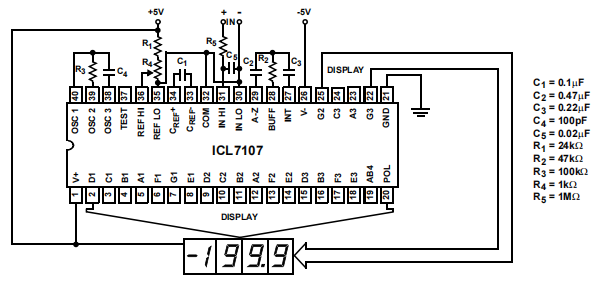
ICL7107 Test Circuit and Typical Application with Led Display Components Selected for 200mv Full Scale
ICL7107CPLZ Alternatives
| Part Number | Description | Manufacturer |
| TC7107ACPLCONVERTERS | ADC, Dual-Slope, 13-Bit, 1 Func, 1 Channel, CMOS, PDIP40, | Telcom Semiconductor Inc |
| TC7107IPLCONVERTERS | ADC, Dual-Slope, 13-Bit, 1 Func, 1 Channel, CMOS, PDIP40, PLASTIC, DIP-40 | Telcom Semiconductor Inc |
| ICL7107CPL+CONVERTERS | ADC, Dual-Slope, 23-Bit, 1 Func, 1 Channel, Parallel, Word Access, CMOS, PDIP40, PLASTIC, DIP-40 | Maxim Integrated Products |
| ICL7107CPLCONVERTERS | 1-CH DUAL-SLOPE ADC, PARALLEL ACCESS, PDIP40, PLASTIC, MS-011AC, DIP-40 | Rochester Electronics LLC |
| TC7107CPLGCONVERTERS | 1-CH DUAL-SLOPE ADC, PDIP40, 0.600 INCH, PLASTIC, DIP-40 | Microchip Technology Inc |
| TC7107AIPLCONVERTERS | ADC, Dual-Slope, 13-Bit, 1 Func, 1 Channel, CMOS, PDIP40, PLASTIC, DIP-40 | Telcom Semiconductor Inc |
| TC7107ACPLIJLCONVERTERS | ADC, Dual-Slope, 1 Func, 1 Channel, PDIP40, CERDIP-40 | Telcom Semiconductor Inc |
| ICL7107CJLCONVERTERS | A/D Converter, 1 Func, CMOS, CDIP40 | Harris Semiconductor |
| TC7107IPLGCONVERTERS | 1-CH DUAL-SLOPE ADC, PDIP40, 0.600 INCH, PLASTIC, DIP-40 | Microchip Technology Inc |
| TC7107CPLCONVERTERS | 1-CH DUAL-SLOPE ADC, PDIP40, 0.600 INCH, PLASTIC, DIP-40 | Microchip Technology Inc |
ICL7107CPLZ Applications
• Pressure
• Voltage
• Resistance
• Temperature
• Conductance
• Current
• Speed
• Material
• Thickness
• Signal Processing
ICL7107CPLZ Package
The following figure is ICL7107CPLZ Package.
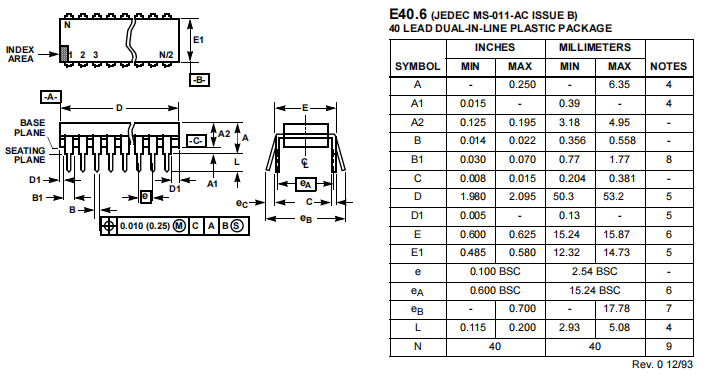
Package
ICL7107CPLZ Manufacturer
Renesas and Intersil will merge on January 1, 2018, resulting in a considerable increase in semiconductor inherent capabilities. Intersil's market-leading expertise in high-performance power management and precision analog devices is combined with Renesas' globally regarded MCU and SoC technologies. As a result, organic expansion in the automotive, industrial, and broad-based industries occurs, allowing the new company to respond more quickly to clients' system requirements. The merger of Renesas and Intersil began on February 24, 2017, with the completion of the acquisition, and the unified "One Global Renesas" went into operation across all markets the following July, bringing together the strengths of both companies in anticipation of customer needs in a rapidly changing market environment. This genuinely worldwide company has a tremendous amount of synergy. Join Renesas as it improves its position as the world's premier semiconductor manufacturer.
Trend Analysis
Datasheet PDF
- Datasheets :
What are the types of A to D converter?
There are really five major types of ADCs in use today: • Successive Approximation (SAR) ADC. • Delta-sigma (ΔΣ) ADC. • Dual Slope ADC. • Pipelined ADC. • Flash ADC.
What is the ICL7107CPLZ?
3.5-digit A/D converter.
Which ICL7107CPLZ is directly driven by an instrument-sized light emitting diode?
ICL7107.
What is the auto-zero range of the ICL7107?
10V.
What are beneficial in all systems?
True differential inputs and references.
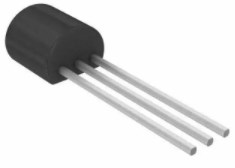 2N5457 N-Channel JFET : Pinout, Alternative and Datasheet
2N5457 N-Channel JFET : Pinout, Alternative and Datasheet15 July 20213667
 A Comprehensive Guide to LTC6404IUD-1#PBF ADC Driver
A Comprehensive Guide to LTC6404IUD-1#PBF ADC Driver06 March 202473
 LM301AN Operational Amplifier: 1MHZ, DIP-8 LM301AN Amplifier, Circuit and Equivalents
LM301AN Operational Amplifier: 1MHZ, DIP-8 LM301AN Amplifier, Circuit and Equivalents11 January 20223937
![The Guide to BFW10 30V N-Channel JFET [Datasheet]](https://res.utmel.com/Images/Article/6a2ddfe6-f3b4-4bba-88df-9090bebad922.jpg) The Guide to BFW10 30V N-Channel JFET [Datasheet]
The Guide to BFW10 30V N-Channel JFET [Datasheet]30 March 202222605
 ATSAM D20E17A/ATSAMD20E18A/ATSAMD20J18A Microcontroller: A Deep Dive Analysis
ATSAM D20E17A/ATSAMD20E18A/ATSAMD20J18A Microcontroller: A Deep Dive Analysis29 February 202476
 MMBT2907A PNP Transistor: 60V 0.8A, SOT-23 MMBT2907A Bipolar Transistor and Datasheet pdf
MMBT2907A PNP Transistor: 60V 0.8A, SOT-23 MMBT2907A Bipolar Transistor and Datasheet pdf20 January 20221666
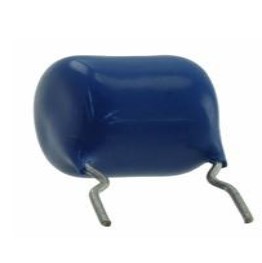 AV101KE Through Hole Resistor: Datasheet, Application, Features
AV101KE Through Hole Resistor: Datasheet, Application, Features30 July 2021917
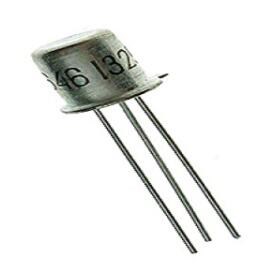 2N2646 PN Unijunction Transistor: Datasheet, Pinout and Equivalent
2N2646 PN Unijunction Transistor: Datasheet, Pinout and Equivalent21 October 202119466
 How does a Resettable Fuse Work?
How does a Resettable Fuse Work?26 August 202034049
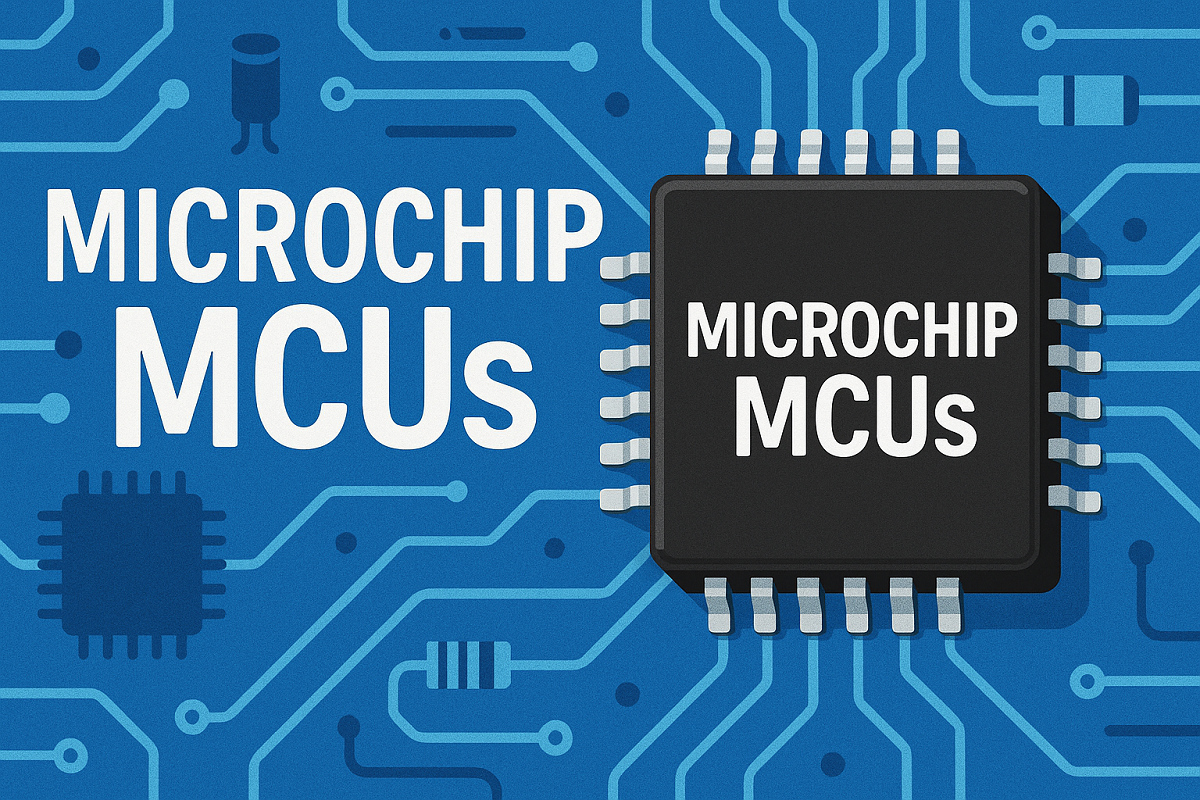 The Ultimate Guide to Microchip MCUs: From Selection to Real-World Applications
The Ultimate Guide to Microchip MCUs: From Selection to Real-World Applications13 September 2025817
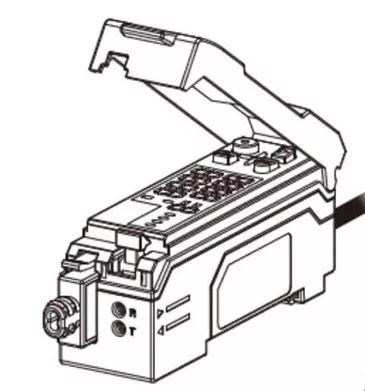 Basic Introduction to Color Sensor
Basic Introduction to Color Sensor23 December 202012033
 Core Components behind Smart Glasses
Core Components behind Smart Glasses28 June 20238716
 How are Integrated Circuits produced?
How are Integrated Circuits produced?20 October 202524537
 Classification and Characteristics of Microwave Filter
Classification and Characteristics of Microwave Filter14 December 20216519
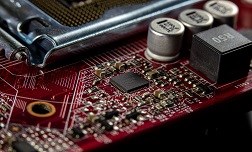 Application Specific Trade-offs for WBG SIC, GaN and High End SI Power Switch Technologies
Application Specific Trade-offs for WBG SIC, GaN and High End SI Power Switch Technologies22 November 20221443
 Rotary Switches Brand Comparison for Engineers and Buyers
Rotary Switches Brand Comparison for Engineers and Buyers11 July 20251234
Intersil (Renesas Electronics America)
In Stock: 10480
Minimum: 1 Multiples: 1
Qty
Unit Price
Ext Price
1
$9.036441
$9.04
10
$8.524944
$85.25
100
$8.042400
$804.24
500
$7.587170
$3,793.58
1000
$7.157708
$7,157.71
Not the price you want? Send RFQ Now and we'll contact you ASAP.
Inquire for More Quantity


